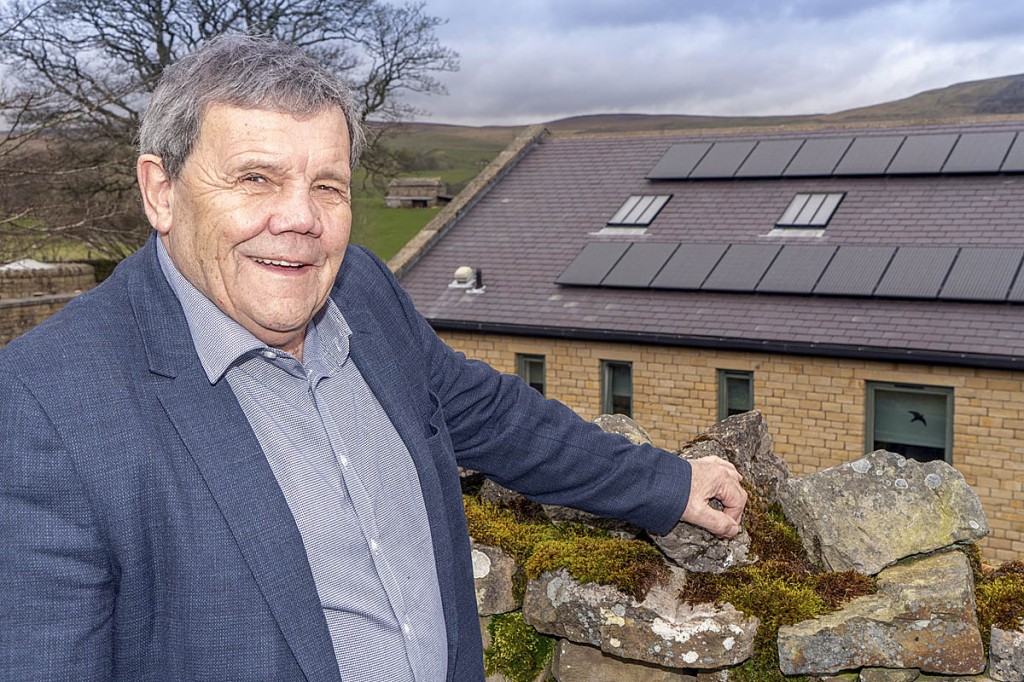The boss of the Yorkshire Dales national park has used his emergency powers to commit the authority to a major carbon-reduction plan.
The measures were due to be debated at a full meeting of members on Tuesday, which had to be cancelled because of the coronavirus crisis.
Chief executive David Butterworth used delegated urgency and emergency powers to adopt the plan formally.
It contains a new objective which commits the Yorkshire Dales National Park Authority to reducing its emissions by 95 per cent by 2030, compared with a 2005 baseline. By March last year, the authority had reduced its emissions by 62 per cent, compared with 2005.
Over the next five years the authority said it will install further renewable or low-energy technologies across its estate, which consists of four office buildings; four national park centres, including the Dales Countryside Museum; four workshops and 10 public toilet blocks.
All of its leased vehicles will be switched to plug-in electric, while carbon dioxide emissions from journeys made by car by officers, members and volunteers will be reduced by at least 10 per cent by 2025 and by 50 per cent by 2030.
The authority said it will also maintain a £30,000-a-year budget to directly fund new woodlands. It added that, by 2030, the amount of carbon dioxide sequestered annually from woodlands funded by the national park authority will be at least 30 times the amount it emits.
Chairman Carl Lis said: “The Yorkshire Dales National Park Authority has been moving to a low-carbon existence for some time, but having declared a ‘climate emergency’ last September, we must show what we can do in deeds not words.
“It is called an emergency for a reason.
“The carbon reduction plan will take the authority way beyond ‘net zero’. It will not be straightforward but we don’t undertake these actions because they are easy. We do them because they are hard. We expect to be judged, by future generations, on our actions not our words, and we expect others to be judged in the same way.
“The Authority and its partners have already set out ambitions, in the national park management plan 2019-24, for making the wider national park more resilient and responsive to the impacts of a changing climate.
“We look forward to working with others to achieve the objectives in that plan. What we are doing with our carbon reduction plan is demonstrating how we are going to get our own house in order.”
All the authority’s toilet buildings will have an LED lighting upgrade, as will four workshops and offices and the national park centre at Grassington, which will also have an air-source heat pump and additional insulation fitted.
The office at Bainbridge will have additional photovoltaic panels fitted, upgraded LED lighting and efficient air-conditioning for its server room.
Similar heat pumps will be installed at Malham and Aysgarth Falls. Photovoltaic cells will also be installed at the Colvend office in Grassington, Aysgarth Falls and the Hawes national park centre and Dales Countryside Museum.

Dave H.
03 April 2020Good.
A small wind turbine at both ends of the Grassington toilet block and info/shop would help produce electricity used in the shop.
Matt Dalby
04 April 2020The best thing they could do is to try and stop grouse moor owners damaging peat through burning/draining. This would help restore a vital carbon sink and make far more difference than installing a few solar panels.
Lottie Lotlot
13 June 2020If we all just decided to do the same thing for once maybe there would be a lot less arguing...